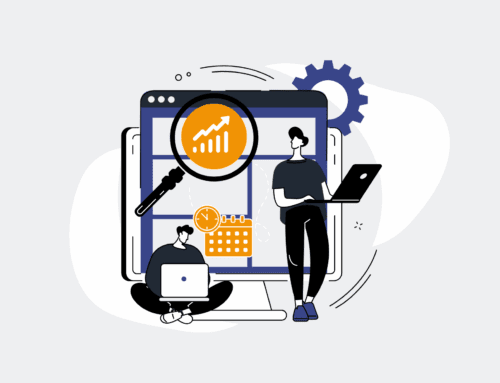Streamlining Data Analysis: Sending Google Analytics Data to Google Data Studio
Introduction to Data Integration
In today’s digital age, data is the new oil, fueling decision-making processes across industries. But raw data is like crude oil—it’s only valuable when refined and put to use. Enter the world of data integration, where tools like Google Analytics and Google Data Studio work hand-in-hand to transform abstract numbers into actionable insights. By streamlining data from Google Analytics to Google Data Studio, you can enhance your reporting capabilities and make informed decisions faster than ever.
Why is this integration so important, you ask? Well, understanding user behavior through analytics is crucial for businesses aiming to optimize their online presence. Google Analytics offers a treasure trove of information, but its sheer volume can be overwhelming. Integrating it with Google Data Studio breaks down these walls, providing you with visual reports that are not just digestible but also insightful. It’s like having a translator for complex data sets, speaking a language everyone in your organization can understand.
Understanding Google Analytics
Google Analytics is like that trusty compass navigating the vast, often unruly seas of digital marketing. It captures a plethora of metrics such as page views, session duration, bounce rate, and user demographics. This tool grants webmasters and marketers the power to keep track of traffic patterns and user behavior, essentially providing a roadmap for digital success.
However, with great data comes great complexity. Often, users find themselves buried under layers of statistics, struggling to extract meaningful insights. Herein lies the need for a more efficient way to handle data—visualization. That’s where Google Data Studio enters the picture, offering a seamless transition from data dumps to dynamic dashboards.
The Role of Google Data Studio
If Google Analytics is the compass, then Google Data Studio is the map-maker, turning raw data into visually compelling maps. Data Studio acts as a bridge between the numbers-heavy interface of Google Analytics and the intuitive understanding required by stakeholders. It provides versatile templates and customizable charts, making data presentation more impactful.
The adaptability of Google Data Studio allows users to create real-time dashboards that can communicate vital information at a glance. Whether you’re tracking marketing campaign performance or analyzing website traffic trends, Data Studio brings clarity and comprehensibility, converting the abstract into the concrete.
Benefits of Integrating Google Analytics with Data Studio
Integrating Google Analytics with Data Studio is akin to upgrading from a bicycle to a high-speed train. One of the prominent benefits is improved efficiency. Instead of manually sorting through mountains of data, this integration provides automated updates, saving both time and resources.
Moreover, the visualization capabilities enhance interpretability, turning confounding data points into coherent stories. This integration promotes better data-driven decisions, equipping teams with insights they can readily act upon. With enhanced collaboration features, teams can share reports seamlessly, fostering a culture of transparency and informed strategy development across the board.
Step-by-Step Integration Guide
Ready to set sail on your data journey? The integration process is straightforward, starting with logging into both your Google Analytics and Google Data Studio accounts. Ensure that you’ve got access rights secured to avoid any hiccups mid-course.
Once inside Google Data Studio, select “Create a New Report” to begin crafting your dashboard. As your second step, choose Google Analytics as your data source. It’s like picking out the freshest ingredients before cooking a gourmet meal—essential for quality output.
Customizing Your Dashboard Template
Data Studio offers a smorgasbord of templates tailored to different industries and needs. You have the flexibility to choose one that aligns with your objectives. Think of it as choosing the right outfit for an occasion; the presentation matters.
Focus on what metrics matter most to your goals. Want to impress potential investors? Highlight key performance indicators like conversion rates and ROI. Tailor each widget and chart to tell a compelling narrative about your data’s journey.
Utilizing Filters and Segments
Filters and segments in Data Studio are much like adjusting lenses when taking a photograph; they help bring the subject into focus. Use filters to zero in on specific data segments, whether it’s a particular demographic or customer behavior pattern.
This feature not only helps in decluttering your dashboard but also aids in presenting a refined analysis to stakeholders. Remember, clarity is king when it comes to data storytelling.
Overcoming Common Challenges
While data integration is powerful, it’s not without its hurdles. One common issue users face is data accuracy, which can stem from improper filter settings. Always cross-check settings before diving headlong into report analysis.
Additionally, dashboard configuration might seem daunting at first. But think of it like configuring a new tech gadget—initial setup might take a bit longer, but once it’s done, things run smoothly. Patience and persistence are key here.
Conclusion: The Power of Synergy
Integrating Google Analytics with Data Studio represents more than just a technical enhancement; it’s about empowering your business with the ability to make informed decisions rapidly. This synergy unlocks the potential of your data, transforming it into a strategic asset.
By leveraging these tools, your team can navigate the complexities of digital data more efficiently, turning potential chaos into orchestrated harmony. As you continue this journey, you’ll discover that harnessing data is less about numbers and more about uncovering stories waiting to be told.
FAQs
What is the primary benefit of integrating Google Analytics with Google Data Studio?
Integrating Google Analytics with Google Data Studio primarily enhances data visualization, enabling users to convert raw data into insightful reports effortlessly.
How does Google Data Studio improve data reporting?
Google Data Studio improves data reporting by offering customizable templates and real-time dashboards that present data in an easy-to-understand format, promoting better decision-making.
Can filters in Data Studio be customized?
Yes, filters in Data Studio can be customized to focus on specific data segments, allowing for a more detailed and relevant analysis of particular user behaviors or demographics.
What challenges might arise during integration?
Common challenges during integration include data accuracy issues and the initial complexity of setting up dashboards. Proper configuration and understanding of filters can mitigate these issues.
Is prior knowledge of data analysis necessary to use these tools?
While prior knowledge can be helpful, Google Data Studio is designed to be user-friendly, making it accessible even to those without extensive data analysis experience. The learning curve is relatively gentle thanks to its intuitive interface.










